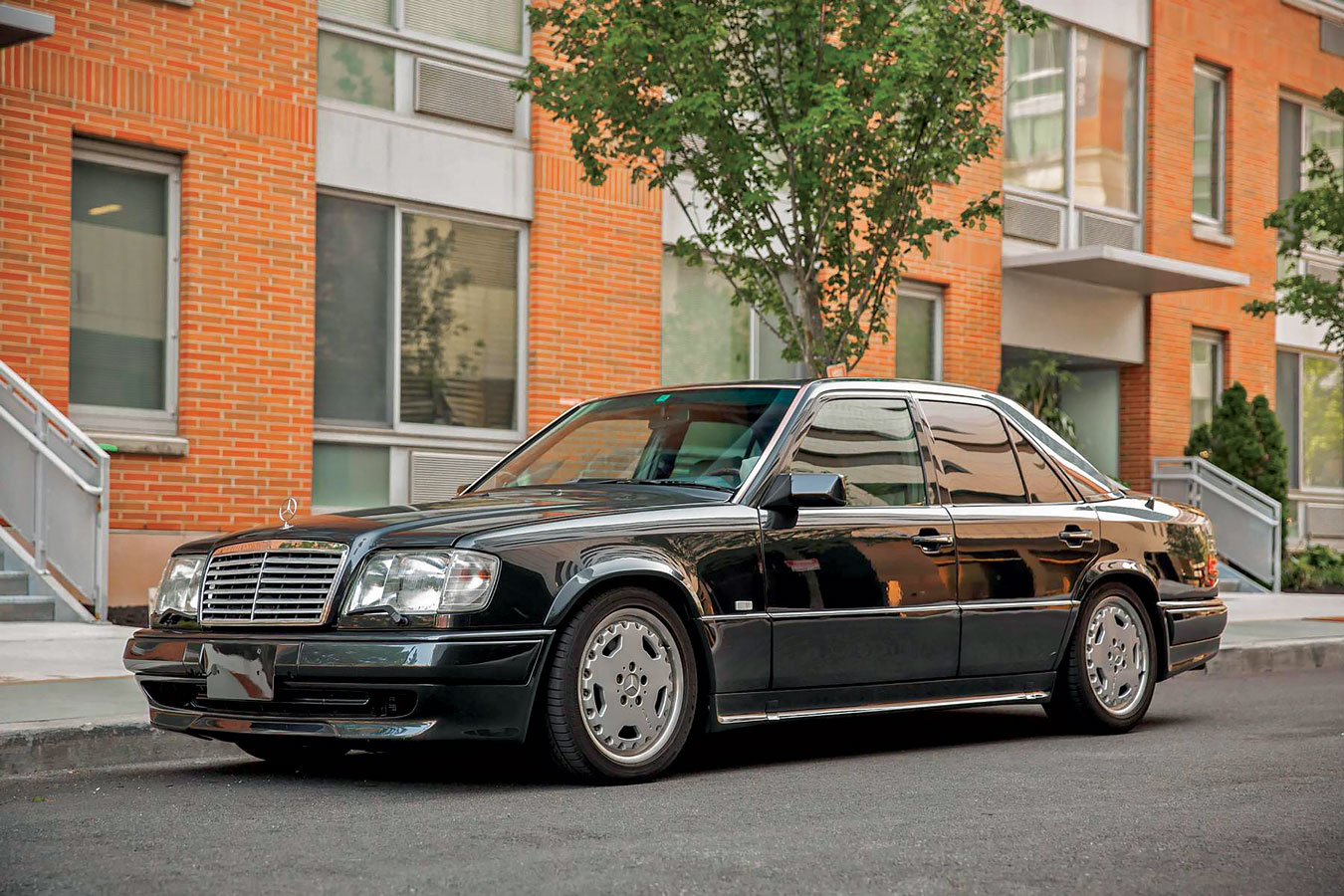SCM Analysis
Detailing
| Vehicle: | 1993 Mercedes-Benz 400E 4.2 AMG |
| Years Produced: | 1992–93 |
| Number Produced: | 19 (approximate) |
| Tune Up Cost: | $800 |
| Chassis Number Location: | Right side of firewall in front of battery box |
| Engine Number Location: | In front of thermo switches on intake, on top of engine block between cylinders 1 and 5 |
| Club Info: | Mercedes-Benz Club of America |
| Website: | http://www.mbca.org |
| Alternatives: | 1995–98 BMW 540i, 1992–94 Lexus LS400, 1994–2002 Audi A8 |
 This car sold for $38,404, including buyer’s premium, on Cars & Bids on January 11, 2021.
This car sold for $38,404, including buyer’s premium, on Cars & Bids on January 11, 2021.
For 1991, Mercedes released the 5-liter V8-powered 500E sedan and its slightly less-intense sibling, the 400E. While the 500E got the lion’s share of attention, the 400E was the moneymaker in this segment, with 22,800 units sold over four model years. This was more than double the number of 5-liter cars, and here in the U.S., the 400E (later rebadged E420) outsold the 500E at roughly a 10-to-1 ratio. This might explain why decent 400Es are readily available for under $10k all day long, while a similarly priced 500E would probably be a high-mileage project car.
Every 400E left the factory with a 4.2-liter M119.975 engine making 275 horsepower. The easiest way to make a 400E more powerful is to install a 5-liter M119.974 engine. That wasn’t done here, as this AMG-tuned variant still has its standard 4.2-liter displacement. Regardless, the 308 horsepower that this engine was said to make when new is fairly close to the 322-hp output of a stock 500E. Additionally, this car has a 500E rear axle with a 2.82:1 ratio (instead of a stock 2.24 unit) for improved acceleration.
Making sense of stages
AMG tuning stages were generally reserved for mechanical (and not visual) improvements, and were never clearly defined, even in the factory literature.
When you examine the AMG modifications on this car, the “Stage III” engine conversion produces an extra 35 hp or so, with the suspension and some of the exhaust also slightly modified. (It looks like about 75% of the exhaust is still stock.) While the engine work helps improve value, there is no documentation presented as to what exactly a Stage III conversion on a 4.2-liter V8 engine consists of. This unclear mechanical alteration of the engine provides our real teaching moment.
AMG offered different levels of power, denoted in three different stages. The bottom tier, Stage I, often meant special cams, headers and maybe some basic airbox or fuel-system modifications, such as a higher-rev limiter. This usually allowed a modest gain in output, perhaps 20 to 30 hp.
Climbing the ladder, it gets trickier. I don’t know what a Stage II conversion entails for a 400E, but on the M117 engine in the 500SEC and 560SEC, solid lifters were installed to increase maximum engine speed and help build more top-end power. No such option exists here, and a true AMG Stage III conversion might have meant the installation of a 6-liter M119 engine.
Confusing spec, verifiable power
To further complicate things, it seems that this AMG model was unique to the Japanese market, and that there was only one engine-upgrade option. While “400E 4.2 AMG Stage III” sounds nice, it simply means the engine was juiced up to make some extra power.
This is confirmed by the seller-provided dyno sheet, included in the photos with the listing. The rule of thumb with a dynamometer test is that engine horsepower losses through the drivetrain can be close to 20%. Maximum rear-wheel output was recorded at 244 hp, which is higher than a stock 400E would produce. This proves something was done to make this engine hotter, and with the 20% loss rate applied, it seems like the seller’s auction comments-section claim of 230 kw (308 hp) is accurate.
An affordable pre-merger AMG
The question is, do the power bump and the rest of the AMG modifications more than double the value of this 400E?
Typically, mechanical modifications create a notable surge in value when they are applied to top-of-the-line Mercedes models such as the 500E, SL600, 560SEC or similar. For instance, a 6-liter E60 AMG is valued at $200k–$250k, without being that much different than the stock E500 on which it was based.
Wild to mild
AMG modifications, however, have a milder effect on lower-tier models. Case in point: A few years ago, I was offered a 1981 280SE AMG. Yes, it had a true Stage I engine conversion, a 5-speed manual transmission and full documentation. Yet a stock 560SEC was still the quicker car. The asking price for this AMG-tuned 280SE was only $5,500.
We should also consider what else $38k will get you. A #2 condition 500E with higher mileage — say, 90,000 miles — would be worth roughly what this car brought. To get a 500E with the 47k miles our subject car showed would cost substantially more. But the 500E doesn’t wear an AMG badge, which is a lot of the attraction here.
While this was a high price for a 400E, it was a good deal for a real pre-merger AMG product. The iconic AMG models may have gone out of sight for the average buyer, but this example proves that there is still a path to AMG ownership for the average enthusiast. ♦
(Introductory description courtesy of Cars & Bids.)
